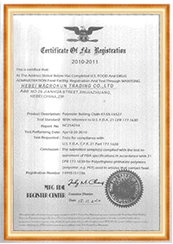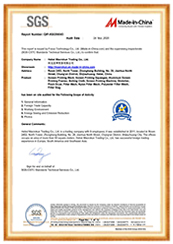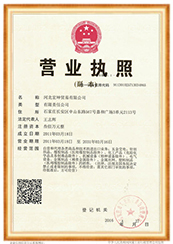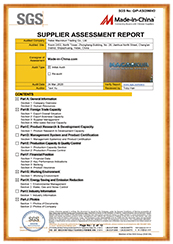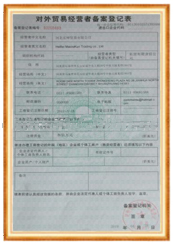
| Screen Tensiometer Model: TETKO MAT The TETKO screen tension meter has been calibrated to zero before leaving the factory. Users do not need to adjust it by themselves. The tension of the net is expressed in N / cm, which indicates how much the tensile force of the mesh yarn per cm width is usually expressed in N-Newton or Kg-kg. Newton shows the actual meaning of the tensiometer; the reading display method: The first reading of the tensiometer reading is incorrect. The second reading of the tensiometer is normal and the tensiometer should be flicked. Mesh next to it. |
When it comes to screen printing, one of the most critical factors for achieving high-quality prints is the tension of the mesh. The correct mesh tension is crucial to achieving the sharpness, clarity, and consistency required in printing. This is where a silk screen tension meter comes into play. A tension meter is a vital tool for ensuring that your screens are tensioned correctly, helping you to avoid costly errors, reduce waste, and improve the overall efficiency of your printing process.
In this article, we will explore the key considerations to keep in mind when choosing a good silk screen tension meter. Whether you are new to screen printing or are looking to upgrade your equipment, this guide will help you make an informed decision.
A silk screen tension meter, also known as a mesh tension gauge, is a device used to measure the tension of the mesh fabric on a screen printing frame. The tension refers to how tight or loose the mesh is, and it is typically measured in Newtons per centimeter (N/cm). The correct mesh tension ensures uniform ink deposition and consistent print quality.
Tension meters are used by screen printing professionals to monitor and maintain optimal tension in their screens, which is vital for achieving fine details and vibrant colors in prints. If the tension is too low, the print quality may suffer, leading to smudging, blurry images, or inconsistent results. On the other hand, excessive tension can cause mesh breakage or difficulty in ink flow.
Before delving into how to choose a good tension meter, it’s essential to understand why mesh tension is so important in the screen printing process.
There are two main types of silk screen tension meters: analog and digital. Each type has its advantages, and the right choice depends on your needs, preferences, and budget.
Analog tension meters use a mechanical dial to measure the tension of the mesh. These meters usually have a spring-loaded mechanism that provides a reading based on the resistance created by the mesh tension.
Advantages:
Disadvantages:
Digital tension meters use electronic sensors to measure the tension of the mesh and provide a digital readout of the tension. These meters offer more precise and consistent readings compared to their analog counterparts.
Advantages:
Disadvantages:
When choosing a silk screen tension meter, there are several important factors to consider. Below, we highlight the key features that can help you determine the best meter for your needs.
The primary function of a tension meter is to provide accurate readings of mesh tension. Look for a meter that offers high accuracy within the desired range (typically between 1 and 40 N/cm). Some meters provide readings to the nearest tenth of a Newton, while others may be less precise. If you’re working with high-end, fine-detail prints, a more precise meter is essential.
A good tension meter should be easy to operate. Digital meters often feature user-friendly interfaces with large, clear displays, while analog meters rely on mechanical dials. Consider how comfortable you are with each type and whether you prefer the simplicity of analog or the advanced features of a digital meter.
Screen printing environments can be harsh, with exposure to ink, chemicals, and physical wear. Ensure that the tension meter you choose is built to withstand these conditions. Look for meters made from high-quality, corrosion-resistant materials such as stainless steel or high-impact plastic.
Different types of mesh require different tension ranges. Ensure that the tension meter you select can measure the range of tensions needed for the screens you use in your business. Most tension meters can measure tension in the range of 1-40 N/cm, but some models can measure beyond this range for specialized applications.
Also, check whether the meter is compatible with the specific type of mesh you use, whether it’s monofilament, multifilament, or any other type. Some meters may be better suited to certain mesh materials than others.
Tension meters need to be calibrated regularly to maintain their accuracy. Choose a meter that is easy to calibrate and comes with a calibration certificate or instructions. Some meters may require professional calibration, while others can be calibrated in-house.
It is also important to look for meters that are easy to clean and maintain, especially if you’re working in a busy print shop where the meter will be used frequently.
Price is an important consideration when choosing any piece of equipment, including a tension meter. While digital models tend to be more expensive than analog models, they offer greater precision and additional features that may justify the extra cost. Consider how much you are willing to invest in the meter based on your business’s needs and the level of print quality you require.
| PRODUCT PARAMETERS |
| Type of mesh | Ty pes of printing | Tension IN / CM |
| Ultra high tension mesh | Circuit board and measuring scale | 16-20 |
| High-strength mesh | Multi-color four-color overprinting machine printing | 16-20 |
| High precision ultrafine mesh | High-precision multilayer circuit printing | 25-30 |
| High-precision polyester mesh standard monofilament | Multi-color and four-color overprint | 8-12 |
| Ordinary polyester mesh standard monofilament | Flat objects | 8-12 |
| OUR PRODUCT |

| Screen tension meter Common phenomena are printing ghosting, inaccurate color registration, ink smearing, etc., which is the expression of uneven tension. Therefore, the tension meter is an important tool for you to make color plates, precision plates, and dot plates. |


| Reading display mode: the first reading of the tensiometer reading pointer is incorrect, the second reading of the tensiometer rotation is normal, and the net yarn beside the tensiometer must be shaken. |


| Tensiometer Accessories |
| 1. Scale fixing screw 2. Zero adjustment disc 3.1 N / cm (zero point) 4. Base of tension meter 5. Glass calibration block 6. The contact surface of the mesh during the test |
| Measurement Methods And Steps |
| Zero Adjustment Remove the tensiometer from the box, place it on the glass calibration block, and then turn the fixing screw counterclockwise to allow the zeroing dial to rotate. Rotate the zero plate to zero and confirm. Measuring Flip mesh and place it horizontally (PCB contact side up) place the tensiometer at the four corners and center of the screen, check the tension value at each point, and record the minimum value. Check whether the screen tension test value is within the allowable range, if the measured value does not meet the standard, please feedback to the engineer for processing. After the measurement, put the tensiometer back into the box in time, and then put it back on the knife holder. |
Choosing the right silk screen tension meter is an investment in the quality and efficiency of your screen printing operation. Whether you opt for an analog or digital model, the key is to choose a meter that offers the accuracy, durability, and ease of use necessary to maintain optimal mesh tension.
Consider the specific needs of your printing business, the types of mesh you use, and your budget when selecting a tension meter. By keeping the factors discussed in this article in mind, you will be able to select a tension meter that will help you achieve high-quality prints and maintain the consistency and longevity of your screens.
With the right tension meter, you’ll ensure that your printing process runs smoothly, minimizing waste and errors while improving your overall print quality. So, take the time to research your options, and invest in a high-quality tension meter to elevate your screen printing business.
Pre: K606-ESU 6 color 6 stations screen printer
Next: How Aqua Nylon Mesh Helps Maintain Clean Water Quality

MACROKUN has established long-term and stable cooperative relations with many transportation companies such as China Post, DHL, FEDEX, USPS, UPS, etc. Of course, MACROKUN can also provide air and sea transportation. The powerful logistics system enables all MACROKUN'S Printing Mesh, Filter Mesh and Filter Bags and so on to be easily and efficiently transported to any place. For quotes and inquiries, please email our sales team.
